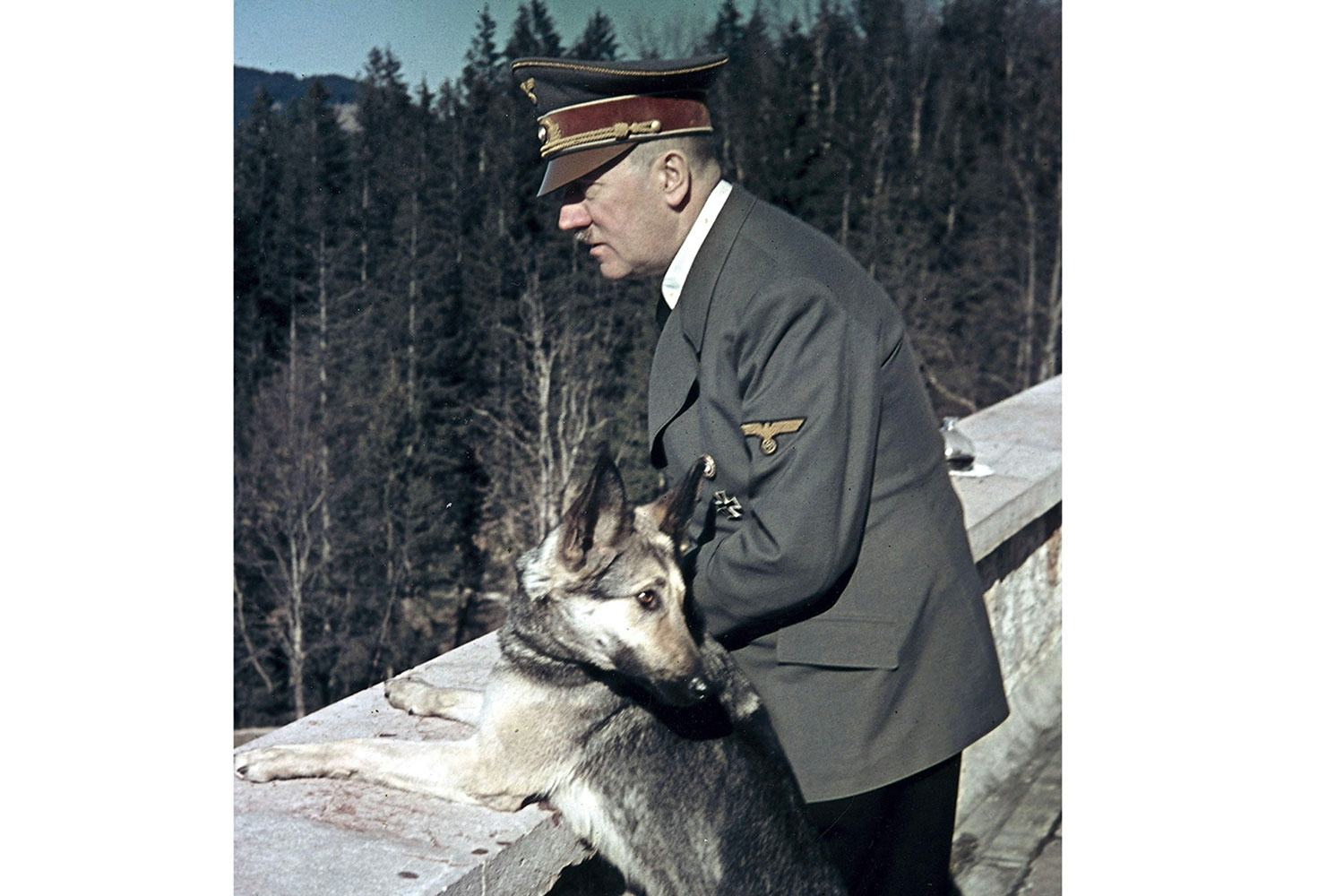 In the past few years, there have been a number of articles and books on Hitler's private life and his inner circle, not least in the Historie monthly, Denmark's History magazine, and the Claude Quétel book
Dans l’intimité d’Hitler (les manies d’un dictateur).
In the past few years, there have been a number of articles and books on Hitler's private life and his inner circle, not least in the Historie monthly, Denmark's History magazine, and the Claude Quétel book
Dans l’intimité d’Hitler (les manies d’un dictateur).
There is much to learn about the Hitler Family and its descendants, including Geli Raubal and Romano Lukas Hitler, along with, needless to say, Eva Braun, Adolf Hitler’s Mistress, Wife, And Suicide Partner — not to mention Hitler's majordomo, Heinz Linge, his personal pilot, Hans Baur, and his secretary (about which, more below).
"Hitler Joins U.S. Navy"
The most interesting member of the Hitler family is perhaps the one who gave rise to the World War II-era newspaper account titled "Hitler Joins U.S. Navy." It turned out not to be Adolf, of course, but Adolf's half-nephew William P. Hitler, who was born and grew up in the British Isles, emigrating eventually to the U.S. not long before Pearl Harbor where he indeed joined the American military during the conflict. (No details on whether William Patrick Hitler served in the Atlantic Ocean, i.e., in the European theater against Germany, or in the Pacific theater — something which seems to be of some importance; by comparison, the 442nd Regimental Combat Team composed of Japanese-American troops [the most decorated unit of the war] did not see action in the Pacific but in Europe.)
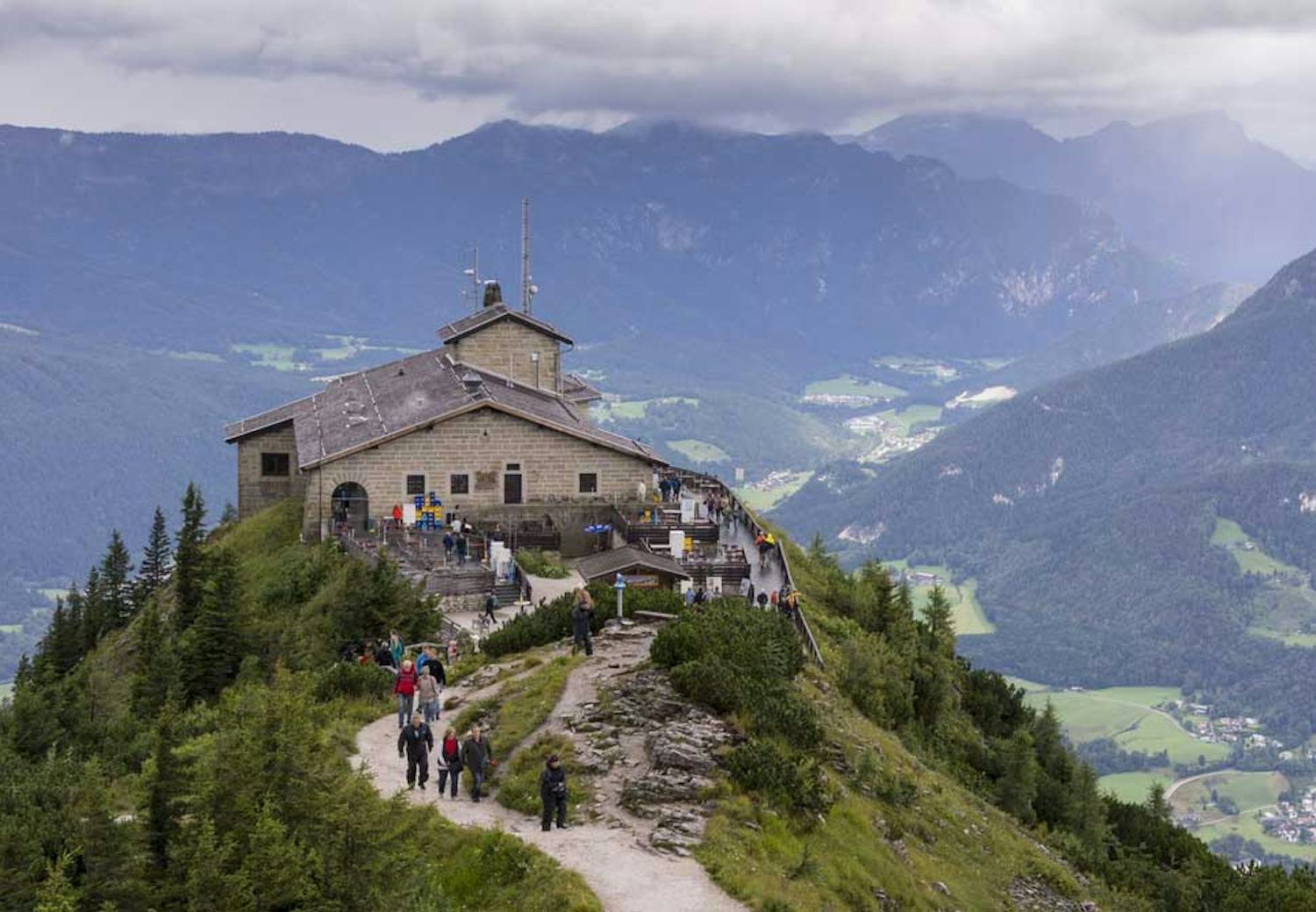
Beyond that, we have information on Hitler's book, Mein Kampf, on Nazi propaganda, on Hitler's Supporters, on Hitler's election, on Kristalnacht, on Hitler's death in The Führerbunker — Adolf Hitler’s Final Hideout — and on conspiracy theories about the Führer's death (or fate). (Some of the hyperlinks point to articles in French, which can be copy/pasted into a translation app.)
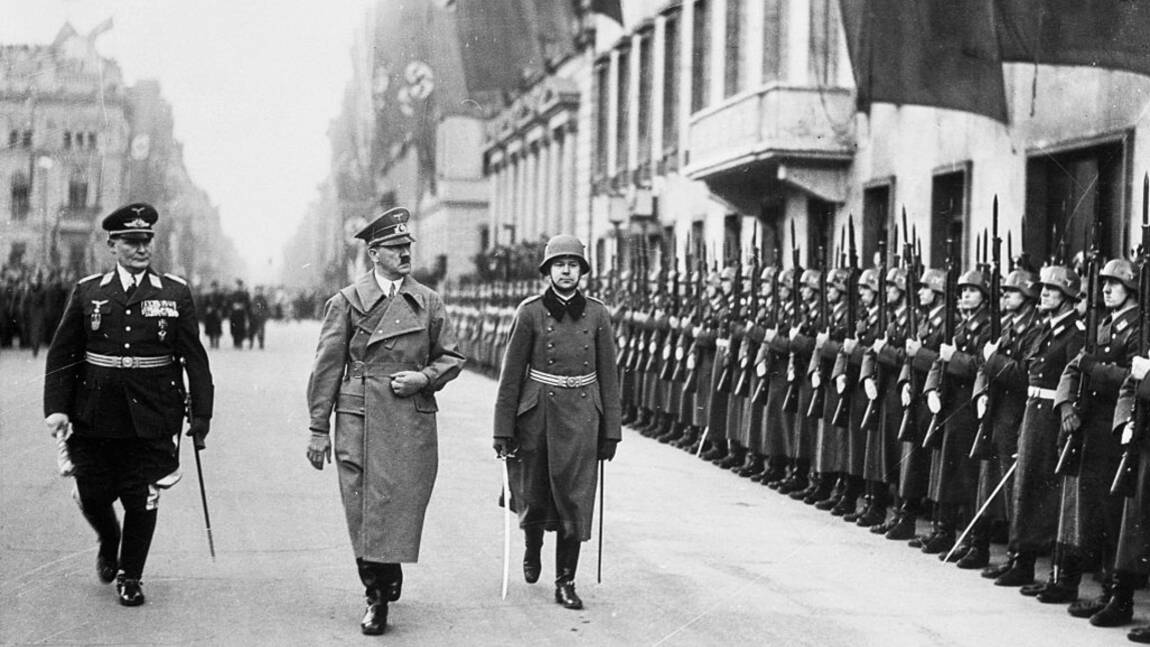 Expanding further, also beyond World War II, we have information about the Mussolini years, about how il Duce was the socialist who invented fascism, about the original significance of the Swastika, about Franco, about the 1934 World Cup, and about the time when the IRA became the ally of Hitler's Germany.
Expanding further, also beyond World War II, we have information about the Mussolini years, about how il Duce was the socialist who invented fascism, about the original significance of the Swastika, about Franco, about the 1934 World Cup, and about the time when the IRA became the ally of Hitler's Germany.
What is perhaps most interesting is the extent to which just about all of the top Nazis turned out to be perverts (remember the brownshirts' Ernst Röhm?), with their fixations on, say, the Third Reich's female movie stars (see the Isabelle Mity investigation). This leads to 's New York post article, The twisted sex lives of Nazis — and the women who loved them…

Le rôle des grandes actrices de cinéma pendant le IIIe Reich décrypté dans l'enquête d'Isabelle Mity…
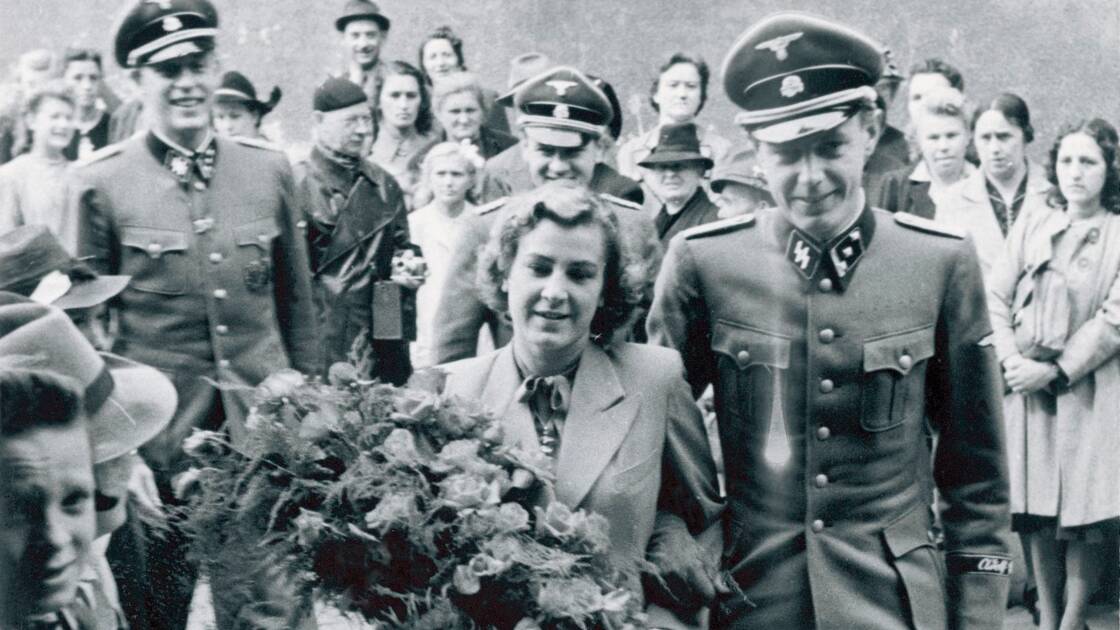
Let Hitler's secretary bring this story together, as recounted by Jean-Jacques Allevi in the Géo monthly:
"After the revelations of this man's crimes, I will live until my last hour with the feeling of having been an accomplice..." Traudl Junge, Hitler's naive and carefree secretary, delivers this confession in her memories (Until the Final Hour), which inspired the film Downfall. Until her death, she will be prey to guilt, undermined by depression taking her back to the time when she lived in the intimacy of the Führer.
... When Hitler goes looking for a new secretary, she is summoned with other employees. Is it her youth, her Munich origins, or her resemblance to Eva Braun? The fact remains that she is recruited to take down the Führer's words in shorthand. “From then on, there were few days when I did not see Hitler, work and share my meals with him. »
At 22, she accompanies him everywhere, to his Berghof chalet, to the Wolf's Lair, his Prussian haunt... She participates in the daily life of the “leader's” inner circle: “Hitler was charming. A simple and good-humored host who entertains in his country house… We laughed a lot.” Fireside discussions sometimes drag on until 6 a.m. without the war or the death camps being discussed. Her role — that of a companion rather than a secretary — becomes burdensome to her. “I had the impression of being a prisoner in a golden cage, from which I would have liked to leave… When I go back, I miss the memory of what was terrible in the world.”
On April 30, 1945, Hitler commits suicide
In 1945, in Hitler's bunker, she celebrated the dictator's birthday on April 20. As a farewell gift, she receives one of the ten poison capsules that the Führer distributes to his loved ones. On April 29, Hitler dictated his will to her. The secretary, who never joined the Nazi party, blackens “the last page of the history of the Reich”. The next day, Hitler committed suicide: “With him disappeared the hypnotic pressure under which we lived. »
... Becoming a member of the cultural forum of the SPD, the social democratic party, she underlined, in 2001, "how easy it was to succumb to the fascination of Hitler and difficult to live knowing that you served a mass criminal. Beautiful facades are often deceptive, it is always worth taking a look behind.” Traudl Junge died in 2002, shortly before the publication of her memories which illustrate “the banality of evil” theorized by Hannah Arendt.

33 Photos Of The Liberation Of Auschwitz, The Nazi Concentration Camp Where More Than A Million People Were Killed
« Après les révélations sur les crimes de cet homme, je vivrai jusqu’à ma dernière heure avec le sentiment d’avoir été complice…» Traudl Junge, la naïve et insouciante secrétaire d’Hitler, livre cette confession dans ses souvenirs (Dans la tanière du loup, éd. Lattès, 2005), qui ont inspiré le film La Chute. Jusqu’à sa mort, elle sera en proie à la culpabilité, minée par une dépression la ramenant à l’époque où elle vécut dans l’intimité du Führer.
… Quand Hitler se met en quête d’une nouvelle secrétaire, elle est convoquée avec d’autres employées. Est-ce sa jeunesse, son origine munichoise ou sa ressemblance avec Eva Braun ? Toujours est-il qu’elle est recrutée pour prendre en sténo les paroles du Führer. « A partir de là, rares furent les jours où je n’ai pas vu Hitler, travaillé et partagé mes repas avec lui. »
A 22 ans, elle l’accompagne partout, dans son chalet du Berghof, dans la Tanière du loup, son repère prussien… Elle participe à la vie quotidienne du cercle restreint du « chef » : « Hitler était charmant. Un hôte simple et de bonne humeur qui reçoit dans sa maison de campagne… On riait beaucoup. » Les discussions au coin du feu s’éternisent parfois jusqu’à 6 heures du matin sans que ne soient abordés la guerre ou les camps de la mort. Son rôle – celui d’une dame de compagnie plus que d’une secrétaire – lui devient pesant. « J’avais l’impression d’être une prisonnière dans une cage dorée, dont j’aurais aimé partir… Quand je reviens en arrière, il me manque le souvenir de ce qui se passait d’effroyable dans le monde. »
Le 30 avril 1945, Hitler se suicide
En 1945, dans le bunker d’Hitler, elle célèbre le 20 avril l’anniversaire du dictateur. En guise de cadeau d’adieu, elle reçoit l’une des dix capsules de poison que le Führer distribue à ses proches. Le 29 avril, Hitler lui dicte son testament. La secrétaire, qui n’a jamais adhéré au parti nazi, noircit « la dernière page de l’histoire du Reich ». Le lendemain, Hitler se suicide : « Avec lui a disparu la pression hypnotique sous laquelle nous avons vécu. »
… Devenue membre du forum culturel du SPD, le parti social-démocrate, elle souligne, en 2001, « combien il était facile de succomber à la fascination d’Hitler et difficile de vivre sachant que l’on a servi un criminel de masse. Les belles façades sont souvent trompeuses, cela vaut toujours la peine de jeter un coup d’œil derrière. » Traudl Junge est décédée en 2002, peu de temps avant la publication de ses souvenirs qui illustrent « la banalité du mal » théorisée par Hannah Arendt.
Related: • 卐mas Caroling: The Extremes Hitler Wanted to Go To in Order to Replace Christianity with the "Religion" of National Socialism.
• Adolf Hitler in Religious Surroundings: Is There Really Evidence That the Führer Was a Christian?
• Worshipping Little Else But the Aryan Race, Hitler Abhorred the Christian Faith and Wanted to Replace Christmas with the Pagans' Yule
• "Out With Jesus" — During His 12 Years in Power, Hitler Tried to Ban the Tradition of Christmas
• "Hitler remained to the end a socialist"; the Führer "was totally irreligious and" wanted to hang the Pope in St Peter's Square
• Jonah Goldberg: Just for the record, Hitler detested Christianity
• Ray Comfort, whose “Hitler, God and the Bible” points out
Hitler devised a master strategy to crush all Christian churches, explains that
it would be either ignorant or disingenuous to call Hitler a Christian:
In a special Christian Broadcasting Network program, Comfort cites the head of Hitler Youth, Boldur von Schirach, who said, “Destruction of Christianity was explicitly recognized as a purpose of the National Socialist Movement.”… The CBN program explains how Hitler put on a religious, even Christian, façade, until he became powerful.
… But later one of his inner circle acknowledged: “I’m absolutely clear in my own mind, and I think I can speak for the Fuhrer as well, that both the Catholic and Protestant churches will vanish from the life of our people.”
•
How Hitler's Nazi propaganda machine tried to take Christ out of Christmas
… the way Christmas was used by the atheist Nazis, who tried to turn it into a pagan winter solstice celebration.
… 'Christmas was a provocation for the Nazis - after all, the baby Jesus was a Jewish child,' Judith Breuer told the German newspaper Spiegel. 'The most important celebration in the year didn't fit with their racist beliefs so they had to react, by trying to make it less Christian.'
The exhibition includes swastika-shaped cookie-cutters and Christmas tree baubles shaped like Iron Cross medals.
The Nazis attempted to persuade housewives to bake cookies in the shape of swastikas, and they replaced the Christian figure of Saint Nicholas, who traditionally brings German children treats on December 6, with the Norse god Odin.
The symbol that posed a particular problem for the Nazis was the star, which traditionally decorates Christmas trees.
… The is a legacy of the Nazi Christmas. The wartime version of the traditional Christmas carol 'Unto us a time has come' is still sung. 'The Nazis took out the references to Jesus and made it into a song about walking through the snow,' Breuer said.
Surprisingly, German churches put up little opposition to the Nazification of Christmas. 'You would have expected them to protest loudly and insist that it was a Christian festival,' said Breuer. 'But instead they largely kept quiet, out of fear.'
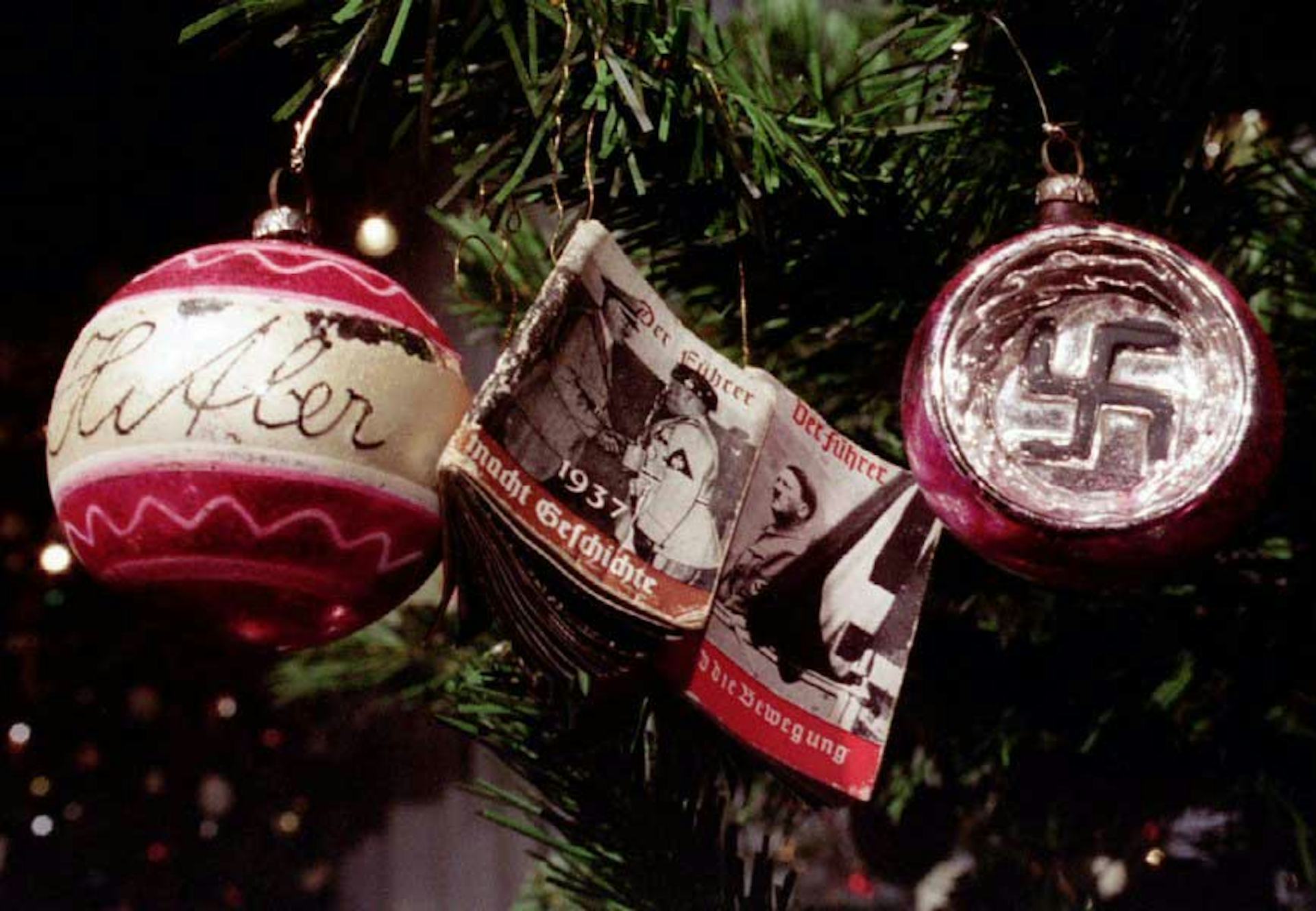
Quelle était la signification de la croix gammée avant d’être l’emblème du parti nazi ?
svastika ou swastika qui signifie bien-être ou encore bonne fortune en sanskrit

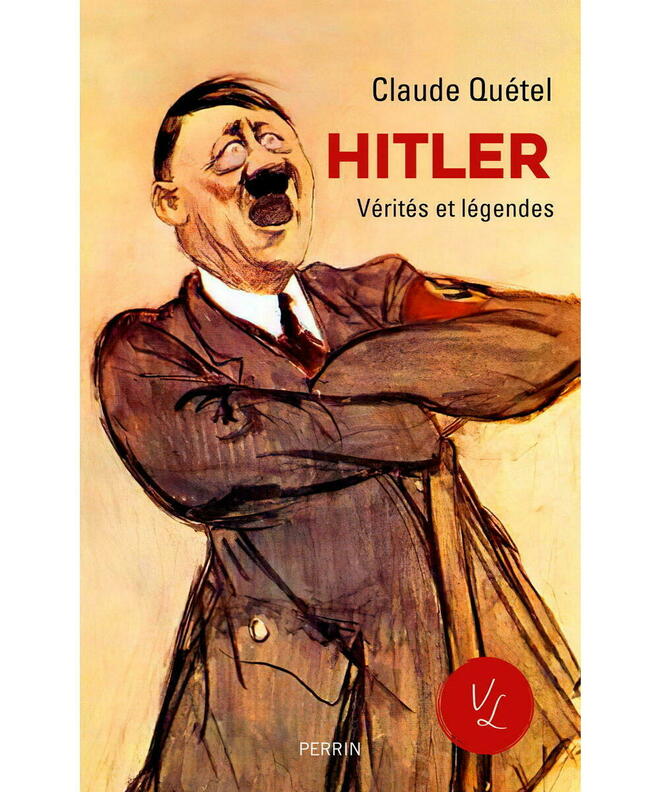


No comments:
Post a Comment